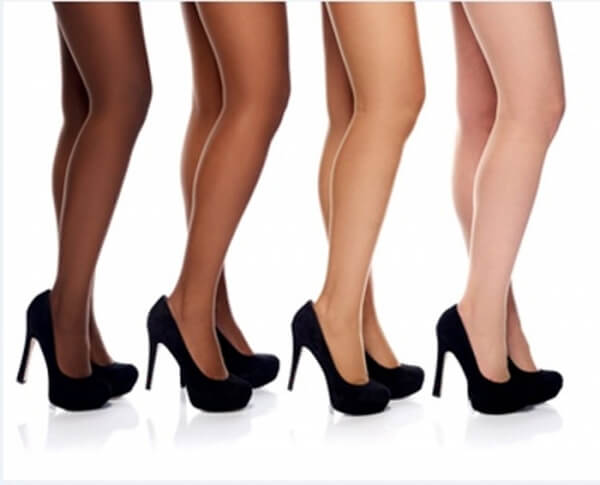No More Fears

Out of the 11.7 million medical aesthetic procedures performed in 2007, laser hair removal accounted for over 1.4 million treatments and 12 percent of the industry’s massive growth. This once unheard of treatment is now the third most sought after non-surgical procedure, according to the American Society for Aesthetic Plastic Surgery.
The ability to gain self-confidence by ridding oneself of hair in embarrassing places and freedom from the monotony of shaving are just some of the benefits individuals seek through laser hair removal.
Unfortunately, Latin, African American, Asian, and other ethnic groups with dark skin tones are often discouraged from choosing laser hair removal because of the procedure’s early reputation for damaging darker skin. Because of poor quality control and lack of trained laser technicians during this period, it is still a common misconception that laser hair removal treatments are not safe for individuals with darker skin. The truth is that advances in laser technology and technique have caused an explosion in the demand for these treatments by consumers with dark skin types, creating a market that is currently outpacing the number of professionals with the training to perform this procedure.
Medical aesthetic professionals face a wide variety of concerns in conjunction with different skin tones and types. The key to overcoming each concern and ensuring a safe and effective treatment for prospective hair removal candidates relies heavily on education. Laser technicians must inform clients on the science behind laser hair removal and the advancement of cosmetic lasers; furthermore, continuing to educate themselves on proper laser hair removal techniques and skin tone concerns in order to better suit the client’s unique skin needs.
In The Beginning:
The U.S. FDA cleared the first laser for hair removal in 1995 with the hope it would penetrate the hair follicle for permanent hair reduction. Results quickly proved otherwise as the treatment was soon diagnosed as ineffective with full re-growth of all hair. In 1998, the U.S. FDA cleared the first cosmetic laser to target melanin in hair follicles. This type of permanent hair reduction was only available to individuals with light skin tones. At the time, only a limited number of laser light wavelengths had been approved, all of which were damaging to darker skin tones because of their inability to safely target only the melanin in hair shafts.
This prevented many darker-skinned individuals from taking advantage of the latest high-tech beauty trend. Since that time, cosmetic lasers have progressed into precision tools with the ability to project light from across the light spectrum in a variety of new ways. The roles of melanin and hair growth are clearly defined throughout laser hair removal, making laser hair removal treatments much safer and more effective for ethnic skin tones.
Hair Growth
A woman’s leg, underarms, and bikini region are among the most common areas where laser hair removal is requested. Hairs in these areas actively grow for around four to six weeks and remain as a mature hairs for another six months, until a new hairs grow and replaces them. For laser hair removal to be effective, it must strike the hair follicle during the anagen phase. Because only a small percentage of hairs are in a growth phase at one time, multiple treatments must be spaced out every four to six weeks to effectively hit every hair as it enters the growth stage.
Laser Heat and Dark Skin
Selective photothermolysis is the basic theory behind the effectiveness of laser hair removal. Specifically selected wavelengths of light penetrate the skin in order to reach the direct target chromophore, or melanin within the hair follicle. Light is then converted into heat within the target. Heat generated within the hair shaft diffuses to the stem cells and matrix locations of the follicle. Proteins in the hair shaft coagulate, and nearby cells rise in temperature, causing mechanical damage to the hair follicle. This controlled and desired damage of the hair shaft disrupts the cycle of hair re-growth. Hair reduction is only considered permanent when a significant amount of hair does not return for longer than the complete growth cycle.
Laser and light-based devices used in hair removal procedures are highly sensitive to all color and melanin, which plays a crucial role in the treatment of ethnic skin types. The laser will target water (which is fine for any skin type), red hemoglobin, or brown melanin. Melanin, the pigment responsible for the color of skin and hair, is produced by melanocyte cells, which comprise eight percent of the epidermis, or top layer of skin. If the proper wavelength or depth of penetration is not correctly set for use on darker-skinned individuals, the cutaneous pigment will overly absorb heat from the laser, damaging the treatment area.
 Tools of the Trade
Tools of the Trade
Advances in laser and light-based technology have given treatment providers the tools required for safe and effective hair removal treatments on a variety of skin types. Ethnic skin tones and darker-skinned individuals require laser light with long wavelengths and pulse widths, preferably with an Nd: YAG laser. Shorter wavelength lasers, such as the 810nm Diode may be effective for some lighter ethnic skin tones, but not all. This type of laser is so well absorbed into melanin that it can lead to epidermal damage on darker skin types and can cause hyperpigmentation, a darkening of the skin, or hypopigmentation, a dramatic lightening of the skin.
Certain ethnic skin types can utilize the 800nm Diode Laser, but this type of laser can only accurately target the correct melanin if proper cooling attachments are integrated with highly specific and expanded pulses. Although this type of laser may be the appropriate depth of laser penetration for some, the risk of burn on darker skin types remains present. The Nd: YAG 1064nm laser is able to travel deep underneath the skin in order to reach melanin present in the hair follicle without harming epidermal pigment. This is the most optimal laser for ethnic skin tones. In addition to the 1064nm’s long wavelength, there are several other parameters to work with, including the timing of the laser pulses, the compression of the device and the amount of energy put into the skin. These modifications should be taken into consideration in order to perform the safest treatment with enough administered energy to produce effective results.
Bumps and Itches
Laser hair removal is typically classified as a cosmetic concern, and usually associated with the general removal of unwanted, pesky hair on the legs or underarms. For ethnic skin tones, the choice may not be that simple. Certain skin and hair conditions, which require the medical attention of laser hair removal, are more prevalent in individuals with dark skin.
Folliculitis is a skin condition prominent in African-American men and characterized by unsightly razor bumps and itchy patches on the face, neck, and back, commonly associated with shaving. The irritation is the body’s natural response to ingrown facial hairs that cause inflamed papules and pustules. Over time, the condition can become chronic and infected, causing keloid scarring and hypopigmented lesions. Fortunately, the advances made in laser hair removal for darker skin types have given laser technicians the ability to successfully and safely treat this issue.
The Fitzpatrick Scale
The Fitzpatrick Scale, developed in 1975 by T.B. Fitzpatrick, a Harvard dermatologist, is the current and recognized method among the medical aesthetics community to classify skin colors and their reaction to UV light. By dividing skin tones into types 1 to 6, aesthetic professionals can accurately determine the best technique required for the specific client. Understanding the various skin types and conditions that can affect skin color is also essential for providing safe and effective laser hair removal treatments. For example, a tan may cause skin to have the appearance of a darker skin type; however, tanned skin reacts very differently from naturally dark skin. In addition, some individuals may appear to have light skin, but their ethnic background and genetics are of darker skin decent and require different laser settings. These are two common and often forgotten concerns when performing laser hair removal procedures.
Skin types 4 to 6 involve the largest risk for injury if a laser technician is not properly trained in treating dark skin types. Skin in these three categories includes people with Latin, Mediterranean, Asian, East Indian, and African-American ethnic backgrounds. Using the wrong setting on a cosmetic laser can cause irreversible damage in the form of hyperpigmentation, hypopigmentation, burning, or scarring. Performing a test spot is crucial before continuing with a full treatment. Test spots with different levels of intensity can inform an aesthetician of the skin’s reaction to treatment. When test-spotting on skin types 4 to 6, it is important to wait 48 to 72 hours before performing the full treatment. Skin tones of this variety often have a delayed reaction to exposure.
Tips for Discussing Laser Hair Removal with Clients
Before any laser hair removal procedure, a quality client consultation is necessary and should include discussions about client skin type, client expectations, and conditions that can affect treatment outcome. Below are a few fundamental considerations that treatment providers should keep in mind when treating clients with ethnic skin tones:
- No two patients are alike, and treatment outcome cannot be predicted.
- Clearly describe the need for multiple treatments, sometimes five to10 for darker skin types 4, 5, and 6.
- Discuss potential risks for scarring, hypo-
or hyperpigmentation. - Review the client skin type and genetic disposition for any history of keloid scarring.
- Be cautious of any active skin infections, as treatments should not be given on areas with lesions or sores.
- Be sure to treat around tattoos, permanent makeup, or pigmented lesions.
- A client taking Accutane® to treat acne should wait at least six months, as this type of medicine increases skin’s susceptibility to damage from the sun and laser light.
- Clients should wait at least six weeks after waxing or plucking. The hair must grow back naturally before a laser hair removal treatment will have an effect.
- Instruct clients they need to avoid extended sun exposure, tanning beds, and self-tanners for at least two weeks before treatment.
For the benefit of the client and the laser technician’s ability to provide the best possible treatment – receiving specialized training in laser hair removal for ethnic tones and darker-skinned individuals is an invaluable safeguard for all medical aesthetic practices.









